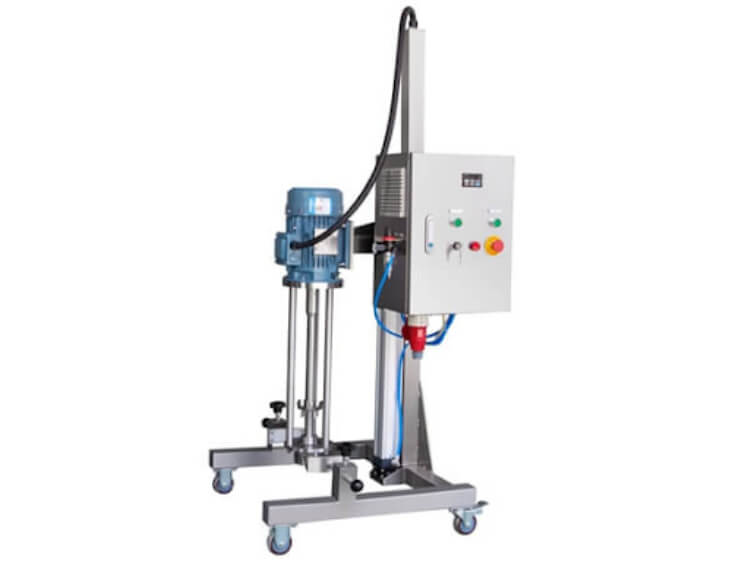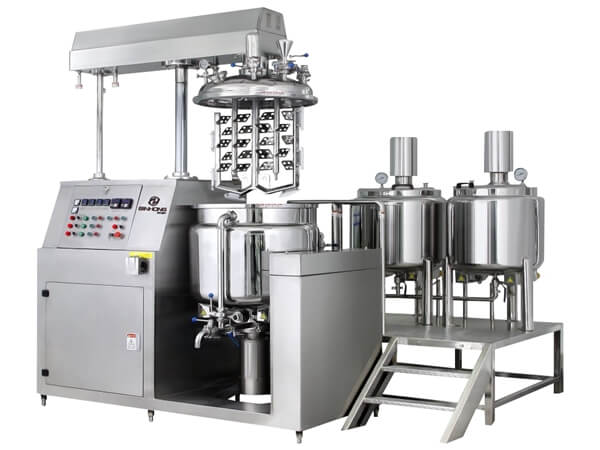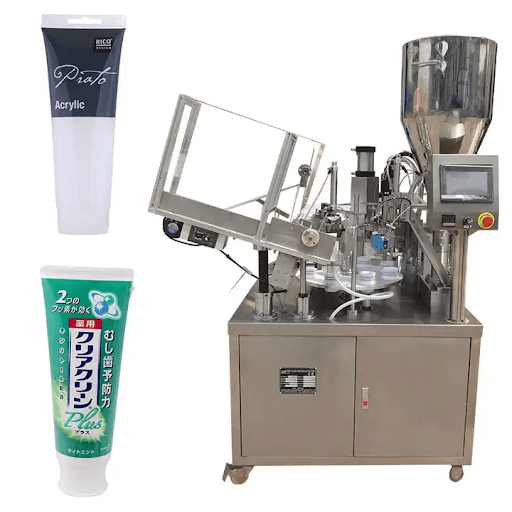This guide is all about the history, ingredients, and science behind sunscreen. How is sunscreen made in a factory? Let’s find out!
Did you know that the journey of sunscreen began not in a lab, nor in mixing equipment, but out of sheer necessity? The invention of sunscreen is an interesting tale, stemming from the need to protect skin from harsh UV rays. Initially, natural substances like zinc oxide were used, but with time, the science evolved, giving us the advanced sunscreens we use today.
Key Takeaways:
- Discover the fascinating history and evolution of sunscreen.
- Understand the critical ingredients and the science behind sun protection.
- Learn about the latest innovations and how to choose the right sunscreen for your skin.
- Effectiveness Factors: Explore what makes a sunscreen effective, including the importance of broad-spectrum protection, SPF, and water resistance.
- Regulatory and Environmental Considerations: Understand the impact of FDA regulations and global standards on sunscreen production, and the importance of environmentally conscious formulations.
Understanding Sunscreen Ingredients

So, what exactly is in your bottle of sunscreen? It’s a meticulously formulated blend of ingredients like titanium dioxide or zinc oxide and sometimes, synthetic components.
These ingredients work together to form a barrier against the sun’s harmful rays. Here’s a more detailed overview of active ingredients and sunscreen formulation for your reference:
Active Ingredients in Sunscreens Manufacturing
Sunscreen is more than a simple cream; it’s a sophisticated blend of ingredients, each playing a crucial role in skin protection:
1. Active Ingredients (10–30%):
1.1 UV Filters: These are the core of sunscreen. They are categorized into two types:
- Organic Filters: Like avobenzone, homosalate, octinoxate, which absorb UV radiation and transform it into harmless heat.
- Mineral Filters: Such as titanium dioxide (TiO2) and zinc oxide (ZnO), which reflect UV rays. Contrary to common belief, these filters mainly absorb UV radiation, with only a small fraction being reflected.
1.2 Broad-Spectrum Protection: These ingredients protect against UVA (315–400 nm) and UVB (280–315 nm) rays, with UVA contributing to skin aging and UVB causing sunburn and DNA damage.
2. FDA-Approved Filters and Global Standards:
The FDA has approved 16 sun-filtering ingredients, but only 8 are commonly used in the US, including the aforementioned organic and mineral filters.
Other ingredients have fallen out of favor due to concerns like allergies (e.g., PABA) or environmental impact (e.g., oxybenzone and octinoxate affecting coral reefs).
Formulation Stabilizers and Sensory Enhancers
Besides active ingredients, sunscreens contain several other components:
3. Formulation Stabilizers (50–60%):
These include solvents (usually water and some oils), preservatives (like phenoxyethanol and tocopherol acetate), and other agents to maintain the sunscreen’s integrity and shelf life.
4. Sensory Enhancers (13–33%):
These ingredients improve the feel and smell of sunscreen, making it more appealing to use. They include moisturizers, fragrances, and emollients.
5. Added Extras (2%):
These are additional ingredients for specific claims, like aloe for moisture, though their effectiveness might be limited compared to primary active ingredients.
Advanced Formulations in Sunscreen
In recent years, the sunscreen industry has seen a surge in advanced formulations. These include:
- Water-Resistant Sunscreens: Designed to provide protection during swimming or sweating, using unique polymer technologies.
- Spray and Gel Formulations: Offering easier application, these forms have gained popularity for their convenience.
What Makes For a More Effective Sunscreen?
When manufacturing sunscreens, the effectiveness of sunscreen is determined by a combination of factors, including its formulation, the type and quality of its active ingredients, its SPF rating, and its ability to provide broad-spectrum protection.
Here’s a detailed breakdown of what makes for a more effective sunscreen:
1. Broad-Spectrum Protection:
- UVA and UVB Coverage: Effective sunscreens offer protection against both UVA (aging) and UVB (burning) rays. UVA rays penetrate deeper into the skin, while UVB rays are primarily responsible for sunburn. Broad-spectrum sunscreens are formulated to shield the skin from the entire range of UVA and UVB radiation.
- Balance of Filters: A combination of chemical and physical filters can provide comprehensive protection. Chemical filters, like avobenzone and octocrylene, absorb UV radiation, while physical filters, like zinc oxide and titanium dioxide, reflect it away from the skin.
2. Appropriate Sun Protection Factor (SPF)

- SPF Rating: SPF indicates the level of protection against UVB rays. Higher SPF ratings offer more protection, but the increase in protection diminishes after SPF 30. For example, SPF 30 blocks about 97% of UVB rays, while SPF 50 blocks about 98%.
- Regular Application: No matter the SPF, sunscreen should be reapplied every two hours or after swimming, sweating, or towel drying.
3. Water Resistance:
- Duration of Protection: For activities involving water or sweat, water-resistant sunscreens are more effective as they are formulated to remain effective for a certain period (usually 40 to 80 minutes) in water.
4. Stable Formulation:
- Photostability: Effective sunscreens remain stable and retain their protective properties when exposed to sunlight. Certain ingredients can degrade in sunlight, reducing the sunscreen’s effectiveness.
5. Skin-Friendly Ingredients:
When selecting a sunscreen, it’s important to consider your skin type:
- For Sensitive Skin: Look for mineral-based sunscreens with zinc oxide or titanium dioxide, as they are less likely to cause skin irritation.
- For Oily Skin: Gel or water-based sunscreens can provide protection without adding extra oil.
Innovations in Sunscreen Technology
Innovation in sunscreen is not just about protection; it’s also about user experience and environmental responsibility:
- Micro-encapsulation: This technology encapsulates UV filters, resulting in better skin feel and potentially reduced skin penetration, enhancing safety.
- Eco-Friendly Ingredients: As awareness grows about sunscreen’s impact on marine life, especially coral reefs, manufacturers are increasingly turning to ingredients that are safe for both humans and the environment.
The Sunscreen Manufacturing Process
The process of making sunscreen starts with blending ingredients in precise measures, then moves on to create either an oil-in-water or water-in-oil emulsion.
The challenge is to ensure that these ingredients provide stable, effective UV protection without harming your skin.
Here’s the step-by-step sunscreen manufacturing process you’d commonly see in sunscreen manufacturing plants.
1. Preparing Individual Phases:
- Oil Phase: Oil-soluble ingredients, such as certain emollients and organic UV filters, are combined.
- Water Phase: Water-soluble components are mixed in a separate vessel.
2. Emulsification:
- The oil and water phases are blended under controlled conditions to form a stable emulsion, the base for most sunscreens.
3. Incorporating UV Filters:
- UV filters are evenly distributed throughout the emulsion. This step is crucial for consistent UV protection.
4. Homogenization and Refinement:
- The mixture is homogenized to ensure a smooth, even texture.
5. Cooling and Final Additions:
- As the product cools, heat-sensitive ingredients like antioxidants and fragrances are added.
6. Quality Assurance:
- The final product is tested for SPF accuracy, broad-spectrum coverage, and safety before packaging.
Manufacturing Equipment in Detail
The quality of sunscreen depends significantly on the manufacturing equipment used:
High-Shear Mixers

High-shear mixers are pivotal in the sunscreen manufacturing process. They are designed to effectively blend, emulsify, and disperse the various ingredients used in sunscreen formulations.
These mixers work by applying intense shear forces, crucial for breaking down particle agglomerates, ensuring even distribution of UV filters, and achieving a smooth texture.
Their ability to mix ingredients thoroughly ensures that the active ingredients are evenly distributed throughout the product, which is essential for consistent sun protection.
Vacuum Emulsifiers

Vacuum emulsifiers play a crucial role in creating stable and uniform emulsions, which are the foundation of most sunscreen lotions and creams.
These machines work under vacuum conditions to prevent air incorporation, which is vital for achieving a stable emulsion and ensuring product longevity.
The vacuum environment also helps in reducing oxidative degradation of sensitive ingredients, such as certain organic UV filters and antioxidants, thus maintaining the efficacy and safety of the sunscreen product.
Filling Machines

Filling machines in sunscreen production are designed for precision and efficiency. They ensure that each container of sunscreen, whether it’s a bottle, tube, or spray, is filled with the exact amount of product.
This accuracy is critical not only for consumer satisfaction but also for regulatory compliance, as the labeled quantity must match the actual content. Modern filling machines are equipped with advanced technologies that can handle different viscosities and types of sunscreen formulations, ensuring consistent product quality.
Sealing and Labeling Equipment
Sealing and labeling equipment are the final steps in the sunscreen manufacturing process, and they are as important as the initial stages.
Sealing machines ensure that the packaging is securely closed to maintain the product’s integrity and prevent contamination. Proper sealing is crucial for preserving the product’s efficacy and shelf life.
Following sealing, labeling equipment is used to apply labels that provide essential information, including SPF rating, ingredients, usage instructions, and regulatory compliance details. This information is vital for consumers to make informed choices and use the product safely and effectively.
Quality Control and Testing Equipment
Quality control and testing equipment are integral to the sunscreen manufacturing process. These machines and instruments are used to test the final product for various parameters, such as SPF rating, broad-spectrum coverage, viscosity, and stability.
Quality control ensures that the sunscreen meets the required safety and efficacy standards set by regulatory bodies.
This equipment helps manufacturers maintain consistent product quality and consumer trust, which are critical in the competitive skincare market.
Challenges, Solutions, and Advances in Sunscreen Mixer Equipment
Traditional mixing equipment in sunscreen production often faces several challenges:
- Inefficient Dispersion: Conventional mixers may struggle to evenly disperse thickening agents and UV filters, leading to inconsistencies in texture and protection.
- Air Incorporation: Traditional mixers can introduce air into the product, which can affect the stability and texture of the sunscreen.
- Incomplete Emulsification: Achieving a stable and homogenous emulsion is challenging with standard mixers, impacting the efficacy of the sunscreen.
- Material Wastage: Some traditional mixers are not efficient at scraping product off the vessel walls, leading to material wastage.
Advancements in Mixer Equipment

Ginhong’s mixers are designed for efficient dispersion of sunscreen ingredients, offering solutions like powerful vacuum dispersion to prevent air entrapment and achieve a uniform product.
Our company has developed high-shear mixers that can rapidly disperse even the most challenging ingredients, reducing processing time and improving product consistency.
Recent advancements in mixer equipment specifically for sunscreen production include:
- Hybrid Process: Combining features of both high-shear and gentle blending, these mixers offer versatility and efficiency in processing various formulations.
- Automated Process Control: Integration of automated controls ensures consistent mixing times and speeds, leading to higher product quality and reproducibility.
- Energy-Efficient Designs: New mixers are designed to be more energy-efficient, reducing operational costs and environmental impact.
- Scraping Mixers: These mixers are designed with scraping mechanisms to minimize product waste and ensure complete ingredient utilization.
Regulatory Insights and Global Standards
The regulation of sunscreen varies globally, affecting both formulation and labeling:
- FDA Regulations: In the U.S., sunscreens are regulated as over-the-counter drugs, with stringent requirements for testing and labeling.
- International Differences: In Europe and other regions, sunscreens may be treated as cosmetics, leading to differences in available formulations and approved ingredients.
The Future of Sunscreen
Looking ahead, the future of sunscreen is likely to focus on:
- Personalization: Tailored sunscreens based on individual skin types and concerns.
- Enhanced Protection: Continued research into broader UV protection, including against UVA1, UVA2, and UVB.
- Integration with Skincare: Sunscreens that also offer anti-aging, moisturizing, or other skincare benefits.
Additional Insights:
FDA and Global Regulations in Sunscreen Production
Regulations are crucial in ensuring the safety and effectiveness of sunscreens. The FDA, along with global bodies, sets guidelines that manufacturers must adhere to. This ensures that the sunscreen you use is not only effective but also safe for long-term use.
Environmental Impact and Reef-Safe Sunscreens
Today, there’s a growing consciousness about the environmental impact of sunscreens. The shift towards reef-safe sunscreens shows the industry’s commitment to protecting not just our skin, but also our oceans.
Conclusion
Sunscreen is a critical component of skin health, offering essential protection from harmful UV rays. This comprehensive guide provides an in-depth look at its history, ingredients, manufacturing processes, and the latest innovations, empowering you to make informed choices for effective sun protection.
Want to find the most reliable manufacturers of sunscreen mixers? Check out Ginhong’s product range.

